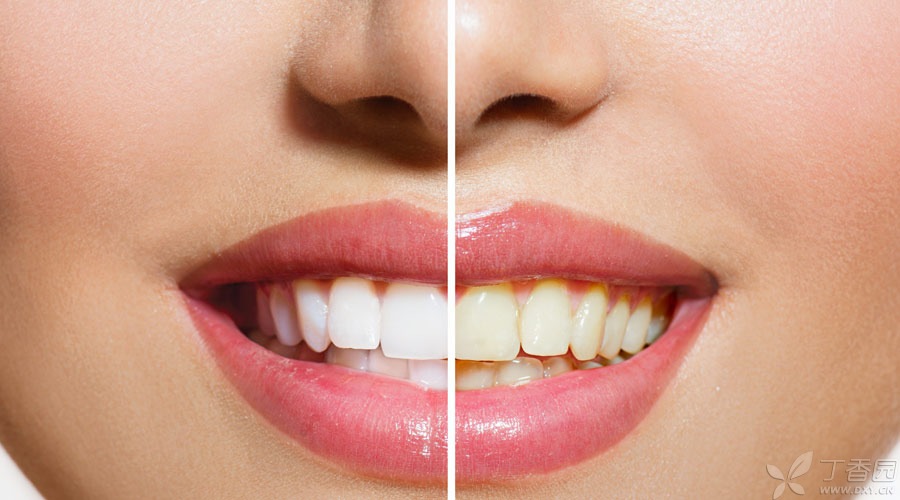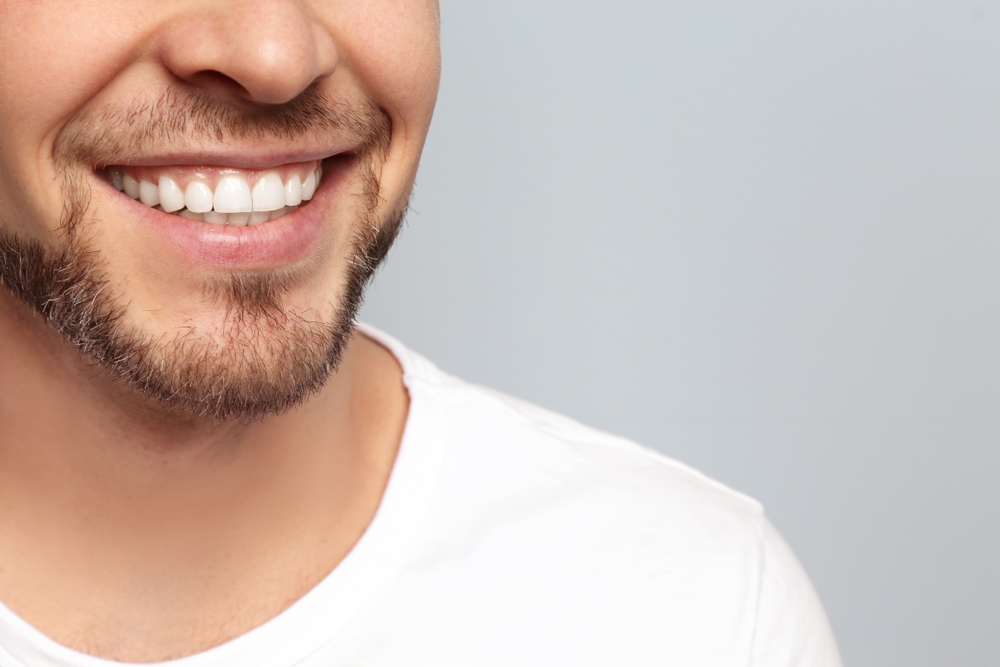
A few days ago, I sprinkled a few drops of coffee on my newly bought white skirt. My mother took out a magical [stain removal pen] and applied it a few times. After a few minutes, the stain disappeared.
I looked carefully and found that the main ingredient of the stain removal pen is peroxide. It turns out that this is the same principle as bleaching the teeth of patients at work every day.
Why aren’t your teeth white?
Due to various reasons, there are more or less some pigment deposition on the surface and superficial layer of teeth. Common reasons include:
- Aging yellow teeth: Young people’s teeth are relatively white. As they get older, they accumulate over time and the color of their teeth gradually darkens. Colored food: Some people often like to drink colored beverages such as coffee, red wine and tea. Pigment is easy to adhere to the tooth surface and can penetrate into the enamel of teeth. Dental fluorosis: dental fluorosis caused by high fluorine content in drinking water; Natural teeth are yellow: Just like our skin color, some people’s teeth are white and others are yellow.
The color of the teeth caused by these reasons is yellow and dark, which cannot be solved by tooth washing, so you need to go to the hospital for tooth bleaching.
Peroxides can be used to remove most colored stains, and similarly, they can also remove pigmentation in the shallow layer of teeth.
The specific principle is that peroxide can diffuse into enamel and superficial dentin of teeth, and redox reaction occurs with pigment molecules therein, so that long-chain organic pigment macromolecules are split into short-chain colorless small molecules, thus playing a bleaching role.
Is whitening toothpaste useful?
Whitening toothpaste is one of the peripheral products for tooth bleaching. For example, if jeans are dirty, we will wash them cleaner, while dark jeans want to change to light color, then bleach must be used.
Whitening tooth patch is used by oneself in daily life. The concentration of whitening ingredients contained in it is relatively low. It can only act on very superficial pigment and can be used as an auxiliary means for tooth bleaching. If you want to remove deep pigment and achieve the best effect, you should go to the stomatology department of a regular hospital to consult about tooth bleaching.
The reason for whitening toothpaste is the same. No matter how good the toothpaste is, it cannot completely remove the pigment. Therefore, the deeper pigmentation still needs to be treated by medical means.
Can bleaching in the hospital turn teeth white?
One thing to remind everyone in particular is that bleaching can only restore the original and original color of teeth, natural white, not white, like white paper.
If you want to find a reference, you can take out a mirror to take a look at it. It is about the same color as white eyes. This is the best effect that tooth bleaching can achieve, and the specific effect will vary from person to person.
How to do tooth bleaching?
According to the different bleaching products used, the course and price of tooth bleaching are slightly different. One course of treatment is about 2,000 ~ 3,000 yuan, and some high-end clinics may be more expensive.
Before tooth bleaching, doctors will estimate the effect after bleaching according to the condition of teeth, design the course of bleaching, select the appropriate concentration of bleaching agent, and try to minimize discomfort in the bleaching process.
Doctors usually instruct patients to use high-concentration bleach 2-3 times first, and then use low-concentration bleach at home as appropriate according to the change of tooth color after operation.

Can tooth bleaching damage teeth?
A small partner who has done tooth bleaching may feel this way. After bleaching, the teeth are very sour!
Indeed, when peroxides in bleach penetrate into the shallow dentin, It may further stimulate the nerves of the teeth. Generally speaking, the more sensitive the teeth are when bleaching, the better the effect is, and the whiter the teeth are. Due to the different thickness of each person’s teeth, the permeability of the teeth is different. The better the permeability of the teeth, the deeper the bleach can reach, the more thorough the bleaching is, and the better the effect is.
This tooth sensitivity caused by bleach will only last for one day (24 hours), because peroxidase is already present in the human body, which can decompose bleach into substances such as water and oxygen within 24 hours and will not continue to stimulate tooth nerves.
However, I am still very worried and feel sour. Does it mean that my teeth are crisp?
Of course not.
Many rigorous and systematic studies have confirmed that bleaching teeth with appropriate concentration of peroxide has no effect on the structure and hardness of teeth and will not cause any damage.
Some research results have shown that using high concentrations of bleaching agents will cause slight demineralization of the tooth surface, just like we just drank carbonated drinks. However, we have saliva in our mouth, and saliva has a protective effect on teeth. This slight demineralization is reversible and will gradually remineralize within 3-5 days after tooth bleaching.
At present, the types and concentrations of bleaching agents used in regular tooth bleaching products are strictly tested and are very safe.
How long can a bleach last? Can you repeat it?
Because the causes of tooth color problems are different, the duration of tooth bleaching is also different.
If the natural teeth are yellow, conventional tooth bleaching can last for a long time, about 2 years. If the teeth turn yellow due to long-term drinking of colored beverages such as coffee and red wine, although the dyeing can be basically completely removed, the bleaching effect can only last for half a year to one year if the teeth continue to drink after bleaching.
If you feel that your teeth are dyed again, you can perform tooth bleaching treatment again. Many girls will become a little addicted after bleaching their teeth and want to do it all the time, but it is generally recommended that they should be able to do it at intervals of more than half a year.
Before you have to get your teeth bleached, you need to prepare what.
If you see here, you have decided to have your teeth bleached. You must want to ask, do you still need to make some preparations for what?
First of all, it is necessary to treat the carious teeth in the oral cavity and ensure that all the teeth are healthy before further pursuing beauty.
Secondly, periodontal treatment is completed, and tartar attached to the tooth surface is removed by tooth washing to expose the whole tooth surface, which is beneficial for bleaching agent to better contact the tooth surface.
It should be noted that bleaching agent cannot change the color of the restoration material. After bleaching, other teeth turn white, while the color of the artificial material will not change on the porcelain teeth or the restored teeth. If the difference is very large, it may need to be replaced again.
After tooth bleaching, is there anything what should pay attention to?
1. There will be slight tooth sensitivity symptoms after bleaching. This sensitive symptom lasts only 24 hours at most. If there are still obvious cold and hot soreness symptoms after 24 hours, please return to the clinic in time and need further treatment.
2. If the pain is severe after bleaching, you can tell the doctor to take some painkillers or use tooth desensitization products instead of anti-inflammatory drugs.
3. Just after bleaching, the teeth are slightly demineralized. Within 2-3 days, the ionic components in saliva will re-mineralize the tooth surface. It is recommended not to eat colored foods (such as foods containing soy sauce, red wine and coffee, etc.) within 1 week after bleaching, otherwise the bleaching effect of teeth will be affected.
4. Just finished tooth bleaching, because of dehydration during treatment, the color of the teeth will be [bleached] and slightly [chalky]. Under the action of saliva, it only takes about 2-3 days, the color of the teeth will gradually become more natural, and it takes 2 weeks for the color to be stable, and repair and other treatments will be carried out after 2 weeks.
5. The whitening effect of tooth bleaching can last for 1-2 years, when bleaching treatment is required again.
It’s so simple, can you do it at home?
Recently, many micro-businesses have started to promote [DIY dental products], not to mention whether the bleaching products are qualified or not. These products have the following hazards:
1. Stimulation of gums and lips
Bleaching agents are very safe on teeth, However, bleach has great stimulation to soft tissues such as gums and lips. Before bleaching, doctors will apply protective agents to these places to isolate soft tissues. However, they cannot do so completely at home. If bleach directly contacts oral mucosa tissue, it may cause erosion, ulcer and other problems.
2. Bleaching agent concentration control
The concentration of bleach is selected according to the color of the patient’s teeth and the sensitivity of the teeth during the operation, which requires rich experience of doctors to achieve the best and safest effect.
3. If you swallow bleach carelessly, it is also very harmful to your health.
Relatively speaking, bleaching is the most minimally invasive method of all dental restoration methods, and its effect is sometimes very surprising. If you happen to be dissatisfied with the color of your teeth, you may as well try tooth bleaching first, but you must ask an authoritative professional stomatologist to make a systematic evaluation, otherwise there will be many risks.
